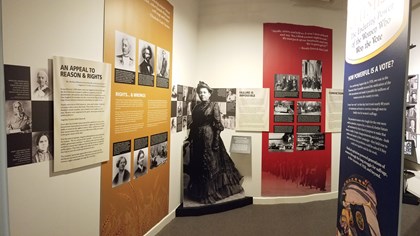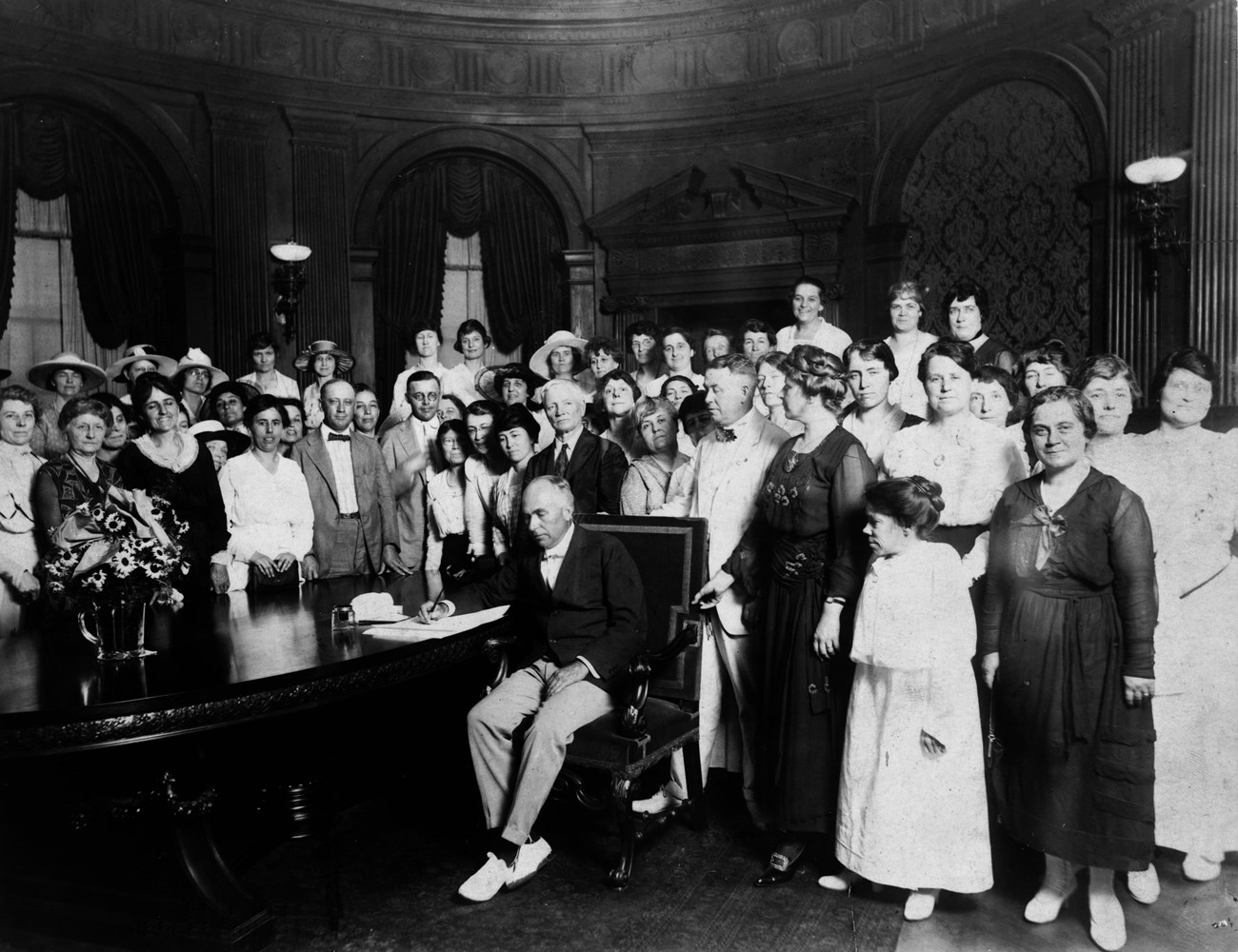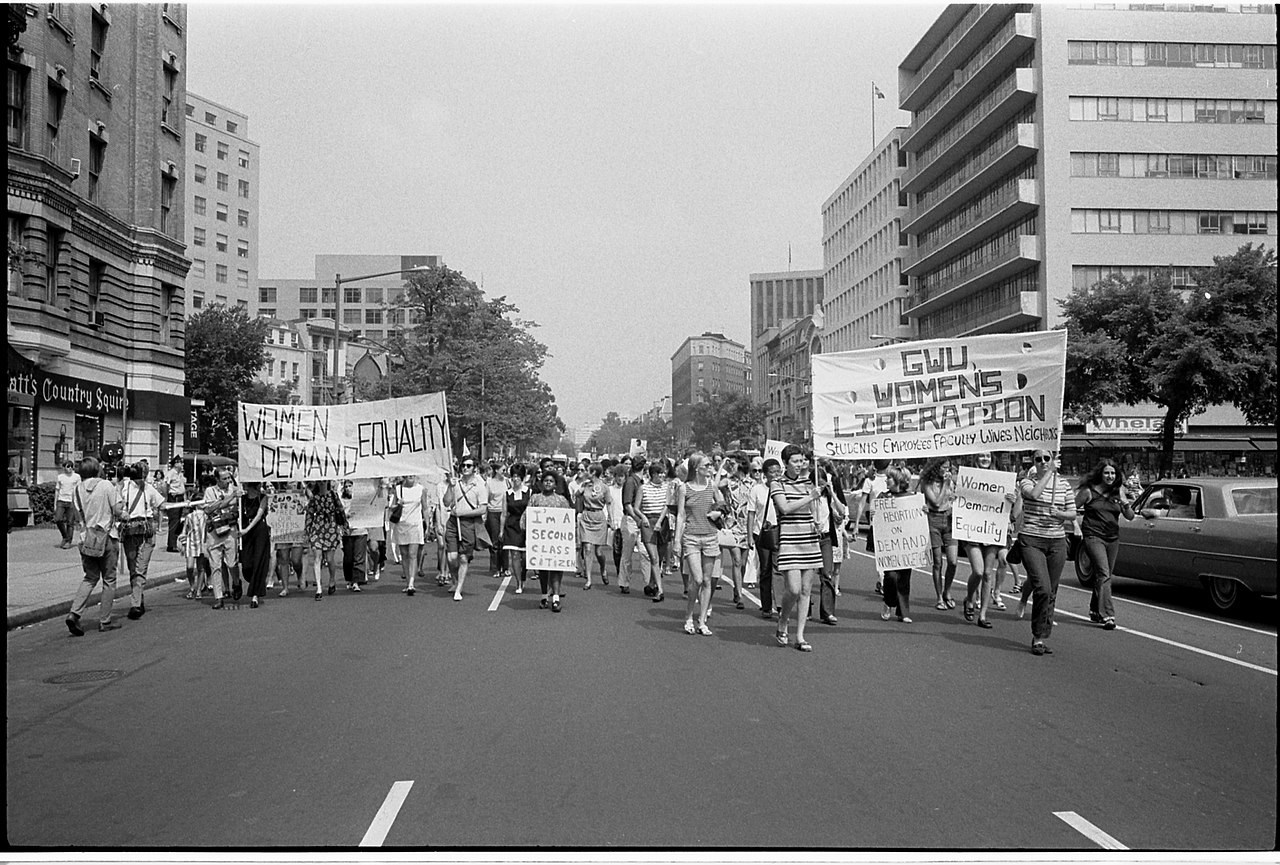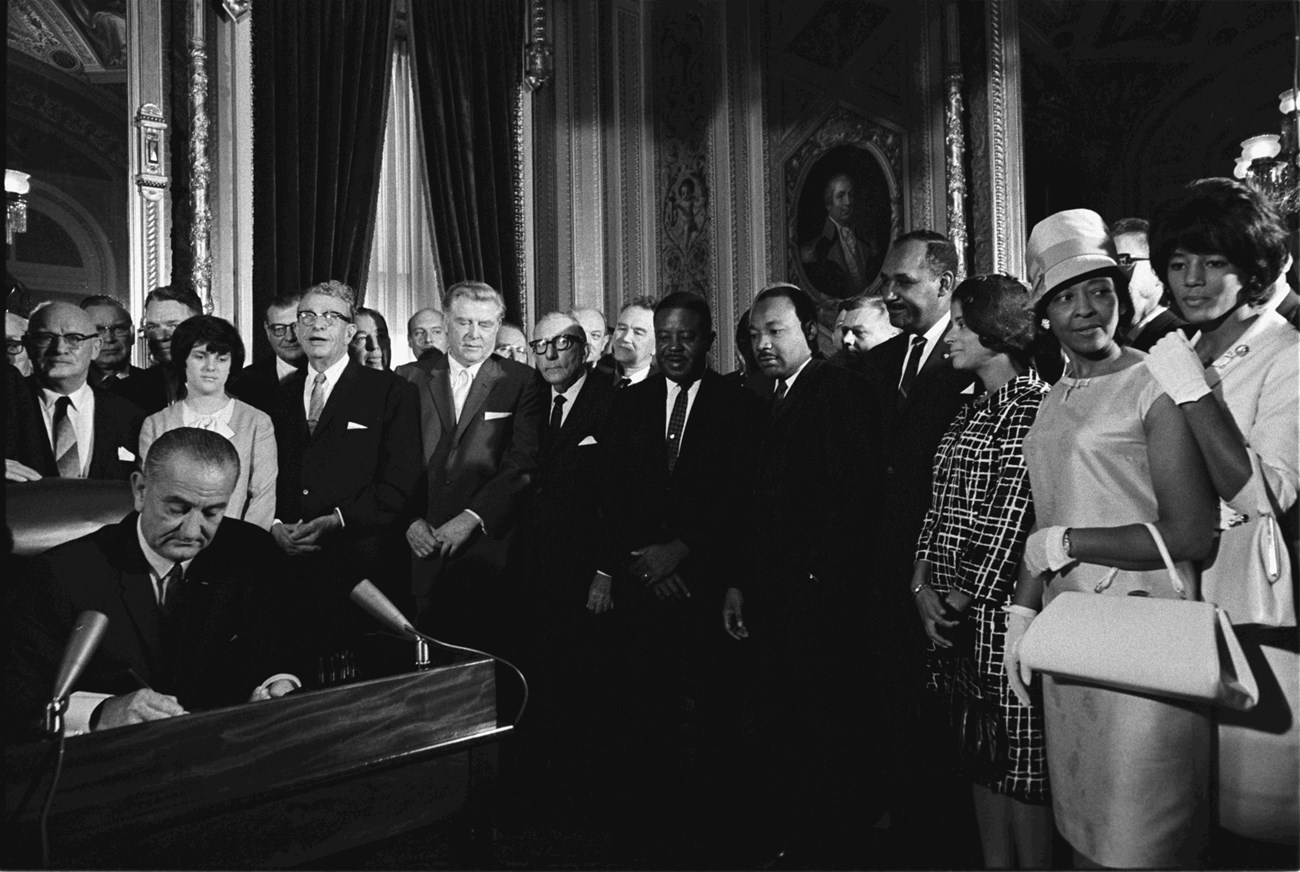

Radical Optimism features an overview of generations of women who dedicated themselves to the struggle for women’s voting rights.
The right of citizens of the United States to vote shall not be denied or abridged by the United States or by any State on account of sex. Congress shall have power to enforce this article by appropriate legislation.

In 1848 women and men met in Seneca Falls, New York to advance the cause for women’s rights. The convention, organized by Elizabeth Cady Stanton, Lucretia Mott, Martha Wright, Mary Ann M'Clintock, and Jane Hunt marked the beginning of a formal women’s suffrage movement. The men and women of the movement made speeches and petitioned Congress, pressuring government officials to recognize the woman’s right to vote. Stanton, Mott, and suffrage advocate Susan B. Anthony did not live to see women get the right to vote. Instead, they paved the way for future suffragists like Alice Paul, Ida B. Wells, and Mabel Ping-Hua Lee.
The women leading the women’s suffrage movement were not always unified. Some suffragists thought only white women should exercise their right to vote. Others like Charlotte Forten Grimke, Mary Ann Shadd Cary, and Mary Church Terrell knew women of color also had a right to participate in electing government officials.
The first constitutional amendment to secure votes for women was introduced to congress in 1878. It failed. By 1919, suffragists get another amendment introduced to congress that would secure women's right to vote. The 19 th Amendment passed both the House and Senate. The states ratified the 19 th Amendment in 1920, officially recognizing women’s right to vote.

While many women were able to head to the polls, the amendment did not give voting rights to all women. Women of color, immigrants, and lower income women were often deterred from voting by laws and social pressure. For example, Native American women were not considered US citizens until 1924 and were not permitted to vote. Women who were convicted of a crime were also unable to vote, even if they completed their sentence.
After the ratification of the 19th Amendment in 1920, suffragists like Alice Paul knew that their work was not finished. While the government recognized women’s right to vote, many women still faced discrimination. Paul and other members of the National Woman’s Party drafted the Equal Rights Amendment. If ratified, the amendment would guarantee equal rights to all people regardless of their gender. The Equal Rights Amendment was ratified by both houses of Congress in the 1970s but failed to get adequate support from the states. It has not yet been ratified to the Constitution.
Women’s rights advocates did make progress in passing other legislation after 1920. Congress passed the Equal Pay Act in 1963, making it illegal to pay a woman less for doing the same job as a man. A year later, Congress passed the Civil Rights Act of 1964. This act is often associated with the Civil Rights Movement as it prohibits employers from discriminating against an individual based on their race. The act also states that employers cannot discriminate against someone based on their gender. Before the Civil Rights Act of 1964, employers could choose not to hire a woman because of her gender.

A century after the ratification of the 19 th Amendment, women are still advocating for their rights. This activism would be impossible without the power of the vote that enables women to have a say in the democracy they live in. The 19 th Amendment is a milestone in American history.

The 19th Amendment did not guarantee that all women and men in the United States could vote. Securing this essential right has been an long struggle, that for some, continues on to this day.